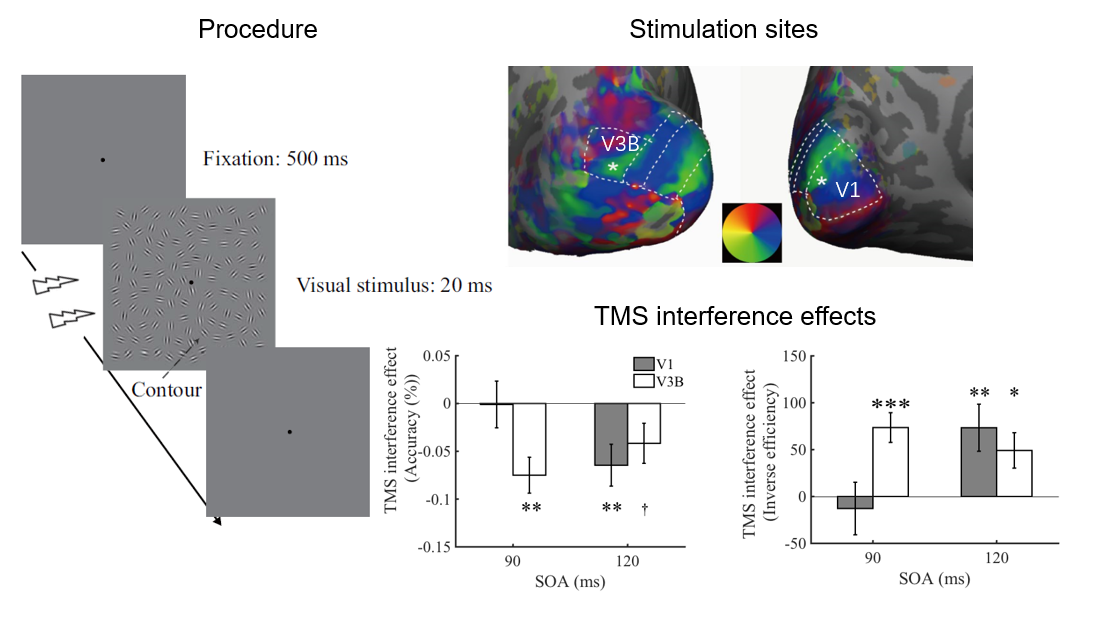In human perception, detecting the contours of objects is important for efficient searching in noisy environment, where objects may not be perfectly segregated from cluttered background. Electrophysiological studies with macaques have suggested that recurrent processing between lower (V1) and higher (V4) levels of visual pathway plays a critical role in contour integration. However, the causal contribution of the recurrent processing between these areas in the human brain during contour integration remains less understood.
In this study, the authors used fMRI-guided TMS to briefly disrupt one of two visual areas (V1 and V3B as a homolog of m&111nkey dorsal V4) and examined the causal contributions of these areas to contour detection. Specifically, this was achieved by revealing the chronological order of the time windows for V1 and V3B in which they were critically involved in contour integration. The results showed that the interference effect of TMS stimulation at V3B occurred earlier than that of V1 (SOAs: 90-110 ms vs. 120-140 ms), demonstrating that the processing of contour-related information in lower-level area follows the global contour representation in the higher visual areas. This study provides the first causal evidence for the recurrent mechanism of contour integration in the human brain.
This work was supported by the grants from the National Natural Science Foundation of China.
Li, Y., Wang, Y., & Li, S. (2017). Recurrent processing of contour integration in the human visual cortex as revealed by fMRI-guided TMS. Cerebral Cortex, DOI: 10.1093/cercor/bhx296.
